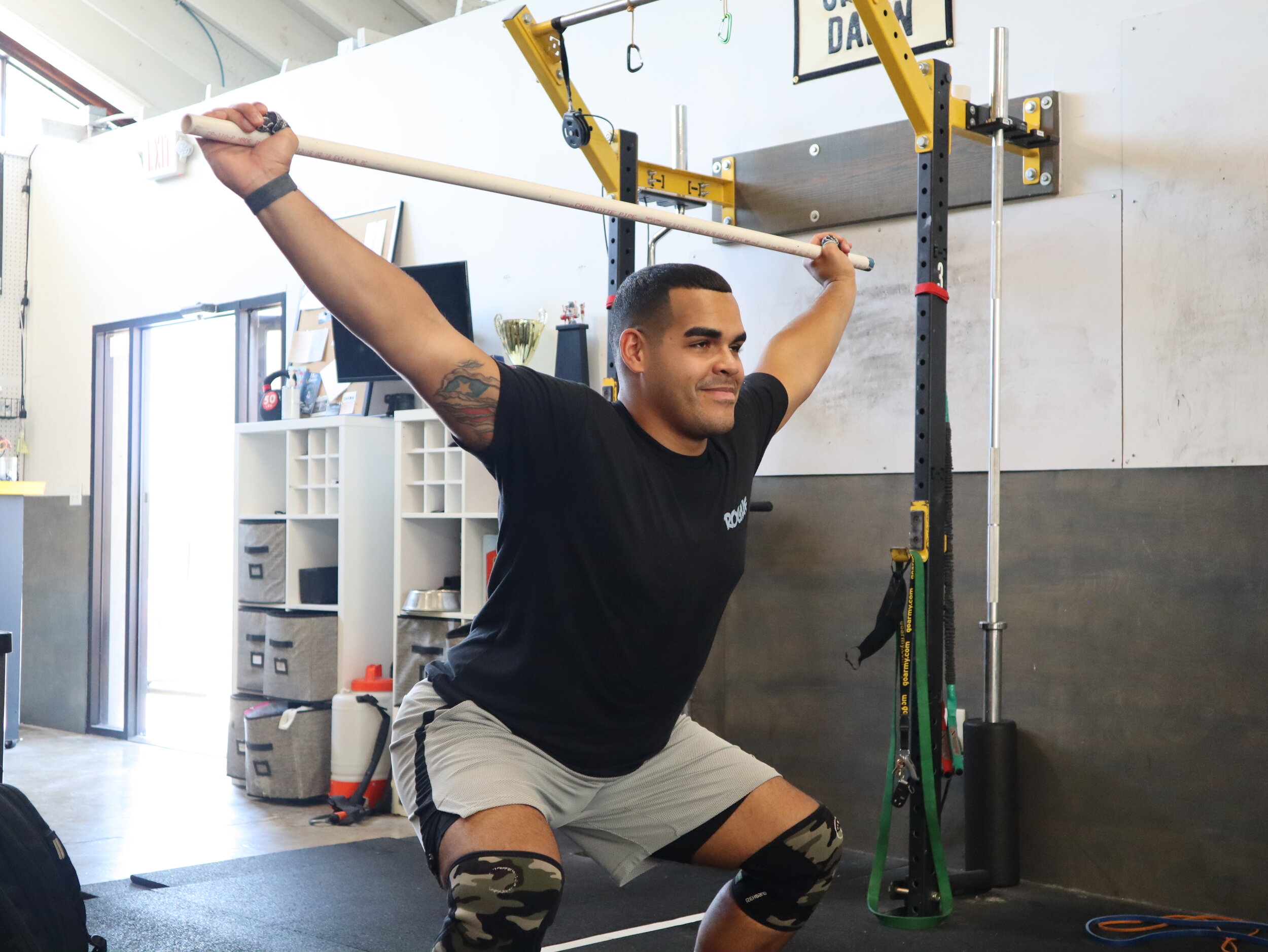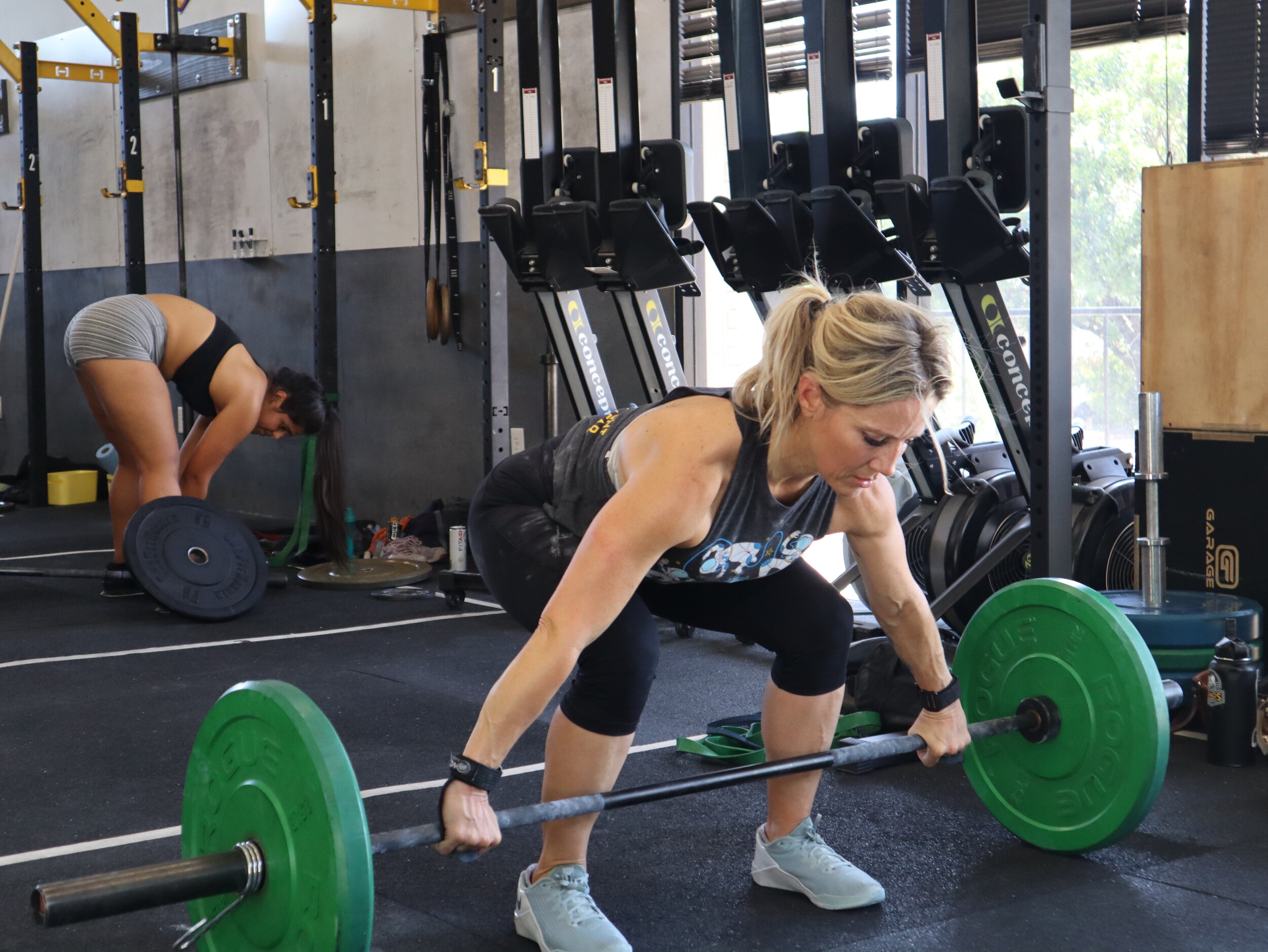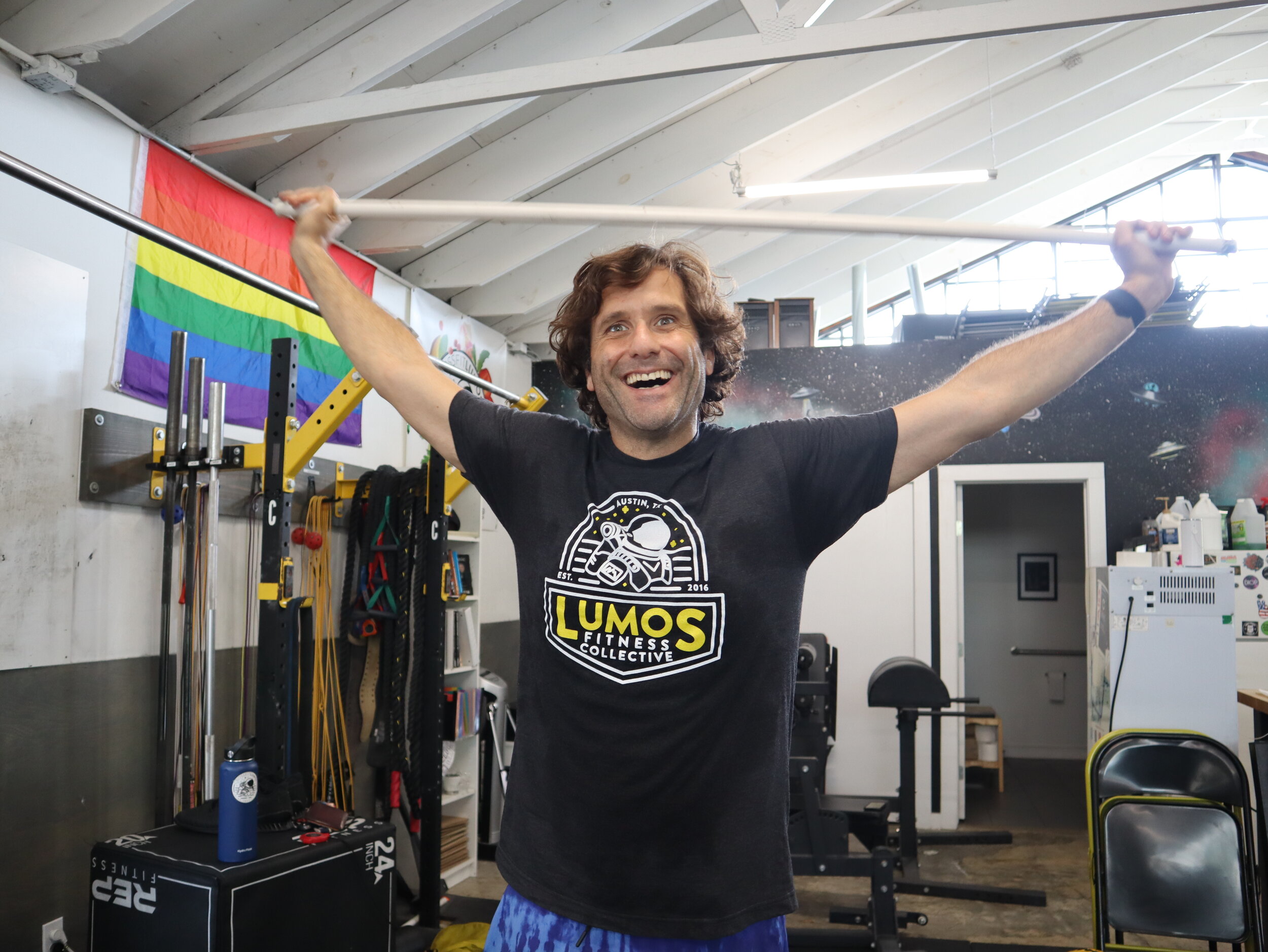By Coach Sarah Rush
With the most recent Lumos Olympic Weightlifting Clinic wrapped up, it’s a good time to talk lifting frustration. You know, that slam-your-barbell, grunt-in-defeat, curse-the-skies frustration. The kind of frustration that few things can elicit like olympic lifting. I’ve seen it happen time and time again in an athlete’s crossfit journey. In the beginning, snatch and clean are exciting, and the fruits of one’s labor easily attained. An athlete’s understanding of the lifts and their ability to perform them grow exponentially over the first exposures, and they “PR” their lifts frequently. With a few months of lifting under their belt, they start to expect to hit certain numbers.Then, one fateful workout calls for a heavy snatch. An athlete looks back at their workout log and expects to hit 95-100% of their max lift that day. They become focused on the weight to the detriment of everything else. They try and fail and try and fail, and each time they fail, the arbitrary weight looms larger in their head. Or maybe, they try and try and finally succeed, and they are rewarded for their brute force efforts. If an athlete repeats this cycle enough, they get into an unforgiving relationship with olympic lifting. Sound familiar? This is not a judgment on you. This is the pot calling the kettle black. I’ve been that frustrated lifter with stalled PRs. Most of your coaches probably have been too. We all have to learn the hard way that raw strength can only get you so far in olympic lifting. Eventually, without commensurate skill, you hit a technical ceiling that no amount of frustration can get you through. And the more time you spend pressed up against that technical ceiling, the more time you spend constructing a mental ceiling. And sometimes, those mental blocks are just as solid as the physical ones. But there is a way through!
How?
The remedy is found in a mixture of confidence-building and technical exercises. Because those mental and physical walls often go hand-in-hand, we have to work on overcoming both to progress. Here are some of the methods that I have found most helpful: Rethink what you value. We quickly determine that our 1-rep maxes are the most important number. That’s why there’s usually a hard line that we get mentally and physically stuck at – because we’re ultra-focused on a single number. But what if you shifted your mindset to value consistency at lower weights over the ability to lift a particular weight a single time inconsistently? On any given day, if you can hit 70-80% of your “1RM” for multiple single reps, that’s likely a better indicator of your proficiency. For a couple of months, try staying under your max threshold for many solid reps – maybe one 65-80% clean every 1:30 for 10 rounds. This will build the confidence and consistency you need to approach a heavier bar because you’ve spent a lot more time making lifts than missing them. Break it down. Stop trying to fix everything at once. Sometimes, we get too ambitious and try to fix seven things at a time in a main lift. In the starting position, we are racing through a laundry list of cues in our head. But our capacity to make simultaneous changes usually maxes out pretty low. You’re going to have to pick a small segment of the lift, slow it down, and drill it until it feels more natural and easier to implement. If the pull off the floor is your problem, do the first 6 inches of the snatch and clean over and over and over. Don’t complicate it with anything else. As you get more comfortable with it, you can extend the work around it and try it full speed. Progress to a halting clean deadlift. Then to a clean deadlift. Then to a clean pull. And so on. You can do this with any segment of a lift in a thousand variations. But the general idea is to work from simple to complex. Stop doing the full lift. Hand-in-hand with breaking down lifts is using complexes instead of singles of the main lift. Complexes are a series of olympic lift variations performed together. They’re another way to step away from main lift singles. Let’s say I struggle pulling myself under the barbell. An example of a complex I might use is: 1 tall squat clean + 1 hang squat clean + 1 squat clean. The goal of this complex – and any complex – is to spend time drilling your particular weaknesses and working under fatigue. Complexes are also a great way to forget about the numbers because often you’ve got no context. You can lift by feel and build confidence at the same time that you condition yourself with multiple sequential lifts. When you finally go for a single, it will feel breezy compared to the multi-lift version. Be okay with imperfection. Olympic lifting is a journey. A very long journey. To become a technical master requires single-minded focus for years. As a crossfit generalist, you are trying to get better at many things at once, which means you’re not likely to achieve Weightlifter’s Enlightenment. This is not meant to discourage you! It’s meant to free you! You will continue to make technical errors and miss lifts. But you will also continue to learn for as long as you are open to it. And finally, trust. Trust that your ability to snatch and clean heavy will not disappear if you stop snatching and cleaning heavy. The goal of many of these methods is to diminish the focus on singles of the main lift. Whether it’s segments or complexes or multiple reps, you need to take weight off of the bar and take pressure off of yourself! It can seem counterintuitive that to lift more weight, we have to stop trying to lift more weight. But remember that you haven’t likely hit a raw strength ceiling. You’ve hit some combination of a technical and mental one. There are many other ways to progress, but starting with one of these is a good first investment into your olympic weightlifting progress.



